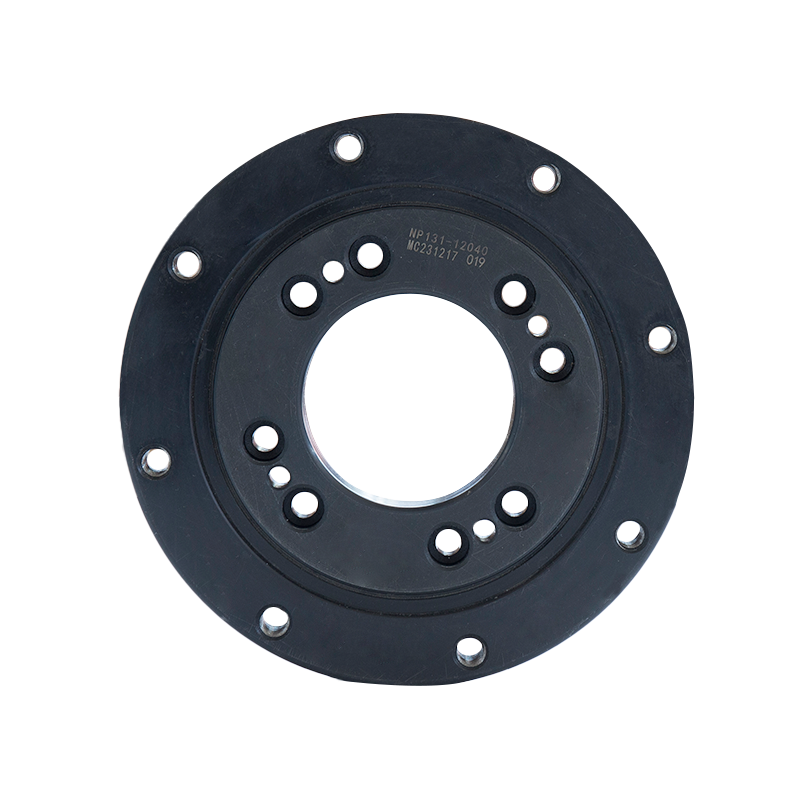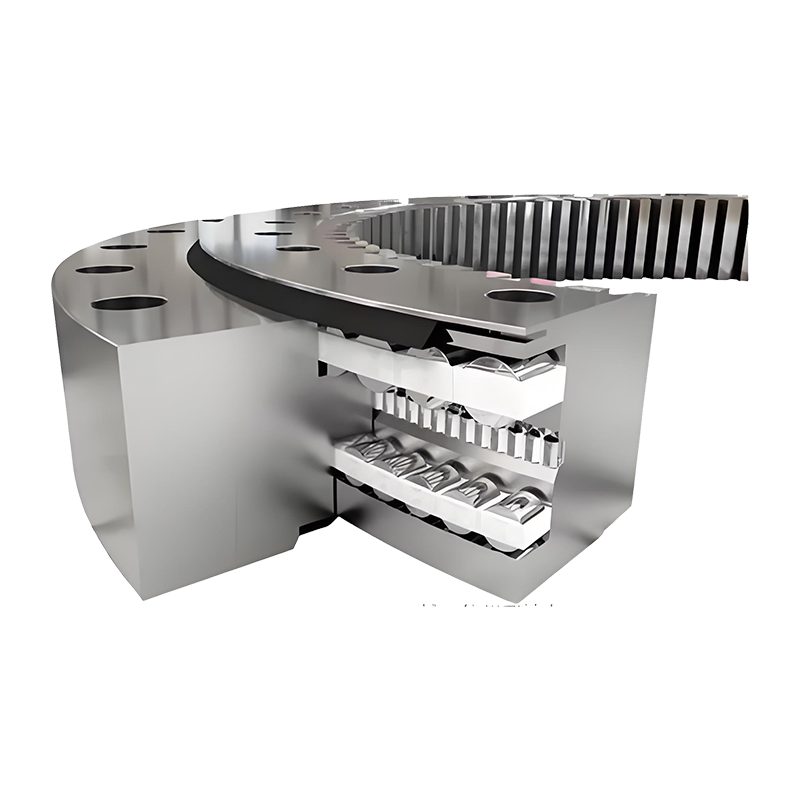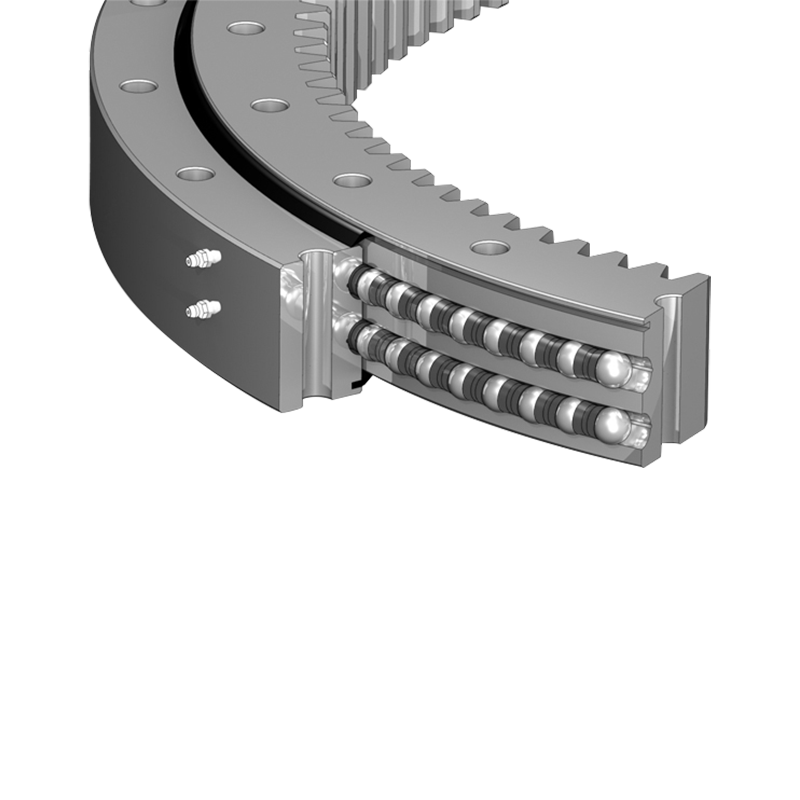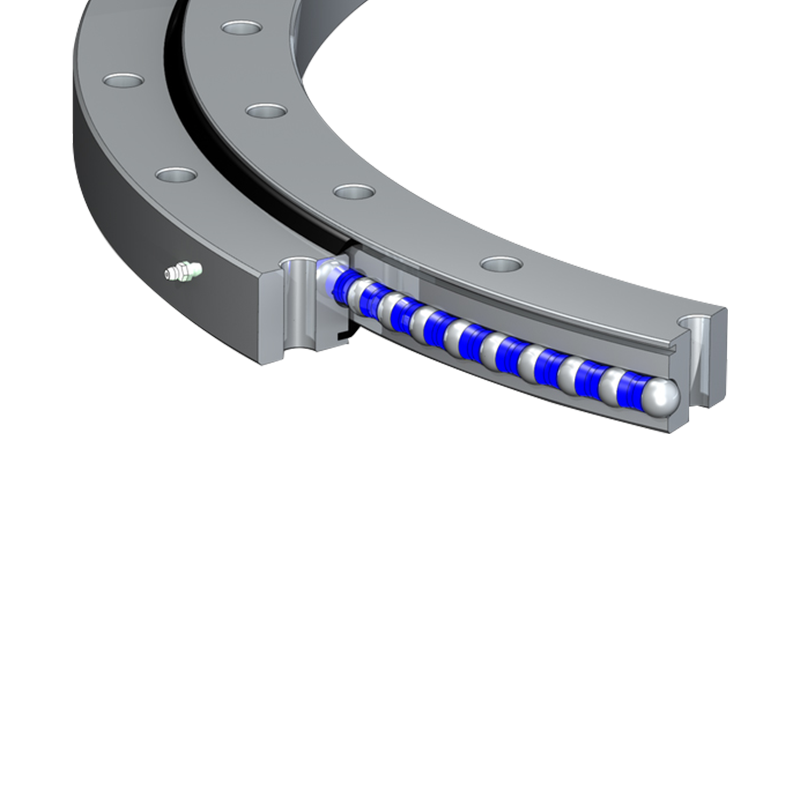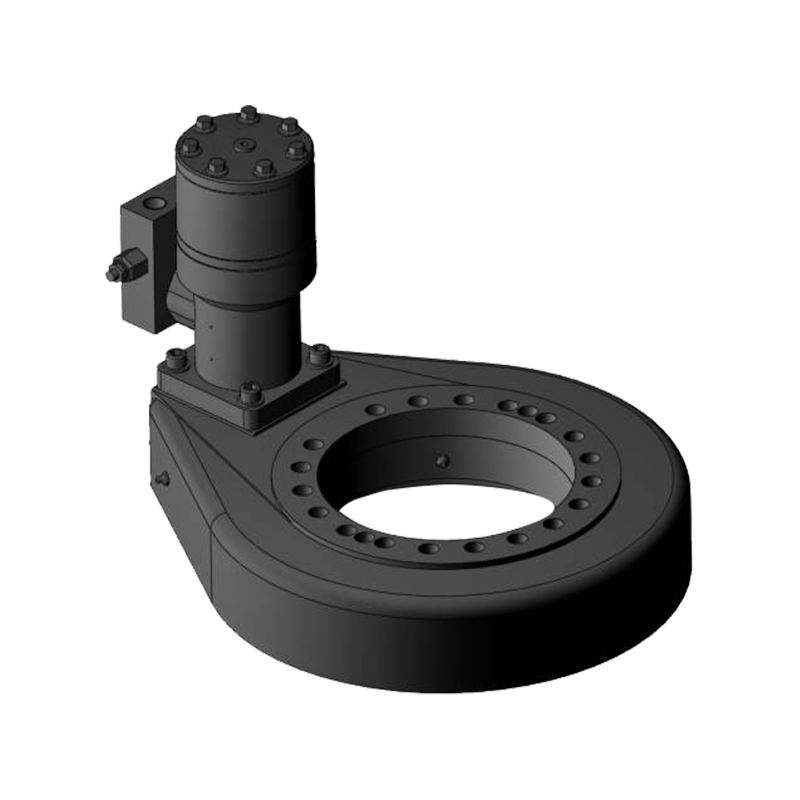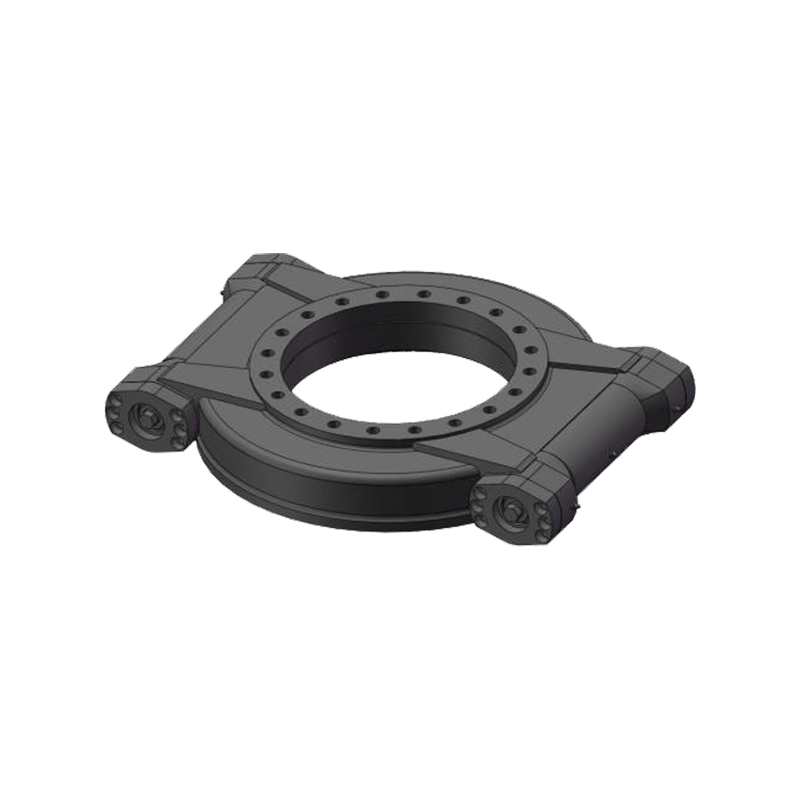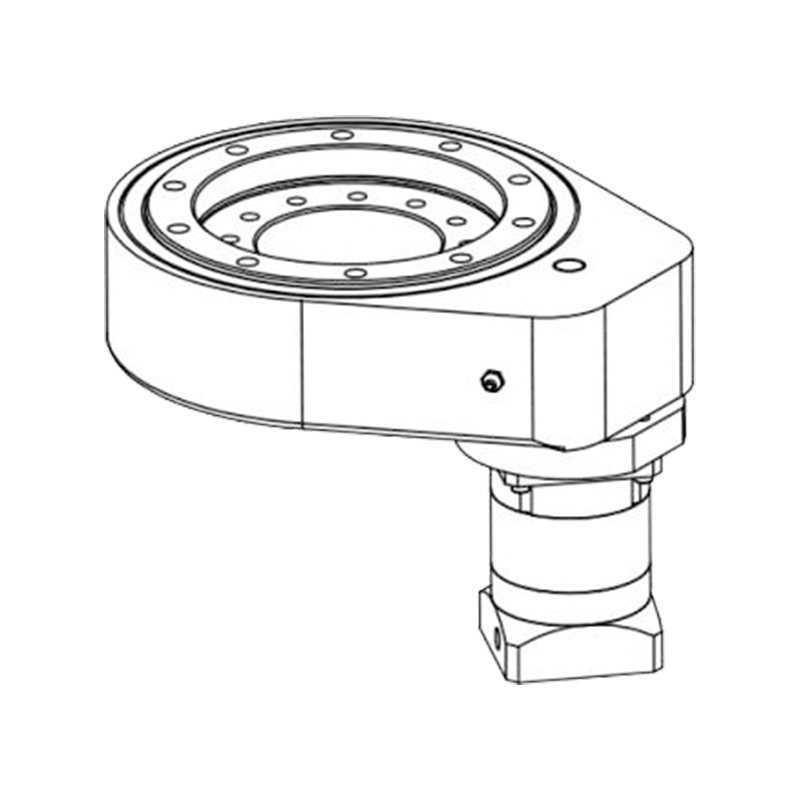What are the defining structural characteristics of an L-type single row ball slewing bearing compared to other slewing bearing types?
 2025.08.29
2025.08.29
 Industry news
Industry news
L-type single row ball slewing bearings are widely used in heavy machinery, cranes, excavators, wind turbines, and other equipment requiring rotational movement under substantial loads. These bearings are valued for their ability to support axial, radial, and moment loads simultaneously while providing smooth rotational performance. Understanding the defining structural characteristics of L-type single row ball slewing bearings compared to other slewing bearing types is essential for selecting the right bearing for specific applications.
L-Shaped Cross-Section
The most notable structural characteristic of an L-type single row ball slewing bearing is its L-shaped cross-section, where the height of the bearing inner ring and outer ring are unequal. This shape allows the bearing to handle axial and moment loads efficiently, with the larger ring providing additional rigidity against tilting or bending forces. In comparison, other slewing bearings—such as C-type or cross-roller bearings—may have equal ring heights or different internal arrangements, influencing load distribution and rotational rigidity.
The L-shaped profile ensures that the bearing can accommodate combined loading conditions without excessive deformation. This is particularly beneficial in applications like cranes or turntables, where the bearing is subject to axial forces from the weight of the load and moment forces caused by offset loading.
Single Row Ball Arrangement
Another defining feature is the single row of balls arranged between the inner and outer raceways. The balls roll along raceways that are precisely machined at specific contact angles, enabling the bearing to sustain axial, radial, and tilting moment loads simultaneously.
Compared to double-row ball bearings, the single row design is more compact and lightweight, making it suitable for applications where space or weight is limited. However, while single-row ball slewing bearings are highly versatile, cross-roller bearings offer higher rigidity for extremely high moment loads due to their orthogonal roller arrangement.
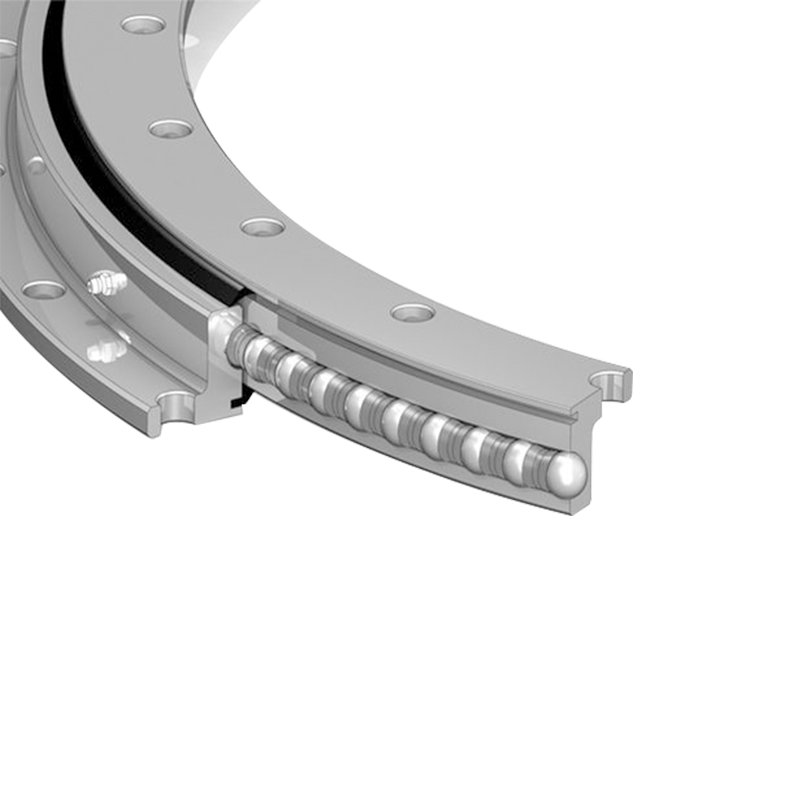
Raceway Design
The raceways in L-type single row ball slewing bearings are typically hardened and ground to ensure precise rolling contact. The contact angles of the raceways are engineered to optimize load distribution:
- The axial contact angle allows the bearing to sustain axial loads effectively.
- The radial contact capacity ensures stability under radial forces.
- The moment load capacity is supported by the geometry of the L-section and the number of balls distributed around the bearing circumference.
This design differentiates L-type single row ball bearings from other slewing types, such as four-point contact bearings, where contact points are designed primarily for combined loads at high precision but with different load distribution mechanics.
Cage and Ball Configuration
The cage or retainer holds the balls in a uniform arrangement, preventing overcrowding and ensuring even load distribution. Materials for cages can vary from steel to reinforced polymers, depending on the application and required durability. This configuration allows for smooth rotational movement and reduces friction and wear.
Compared to cross-roller slewing bearings, which use rollers instead of balls and provide higher rigidity, L-type single row ball bearings balance compactness, load capacity, and rotational smoothness, making them ideal for medium to heavy-duty applications that do not demand extreme rigidity.
Outer and Inner Ring Construction
The inner and outer rings of an L-type single row ball slewing bearing are often machined from high-strength alloy steel, heat-treated for hardness, and ground to precise tolerances. The L-shape allows for asymmetric load distribution, where the thicker portion of the ring accommodates higher stress concentrations.
In comparison, C-type bearings or cross-roller bearings may have symmetrical ring heights, which affects how the bearing handles bending moments and axial loads differently. The L-type design is particularly effective in applications where the primary load is axial, combined with a moderate tilting moment.
Applications of Structural Design Advantages
The unique structural characteristics of L-type single row ball slewing bearings make them suitable for:
- Cranes and hoists: Supporting heavy loads while rotating smoothly.
- Excavators and construction machinery: Withstanding axial and tilting moment forces under uneven terrain.
- Wind turbines and turntables: Enabling smooth rotation with combined load support.
- Industrial robots and rotating platforms: Providing precision with moderate load capacities.
These applications benefit from the bearing’s combination of compact design, load versatility, and smooth rotational performance.
Conclusion
The defining structural characteristics of an L-type single row ball slewing bearing include its L-shaped cross-section, single row ball arrangement, precision raceway design, and robust inner and outer rings. Compared to other slewing bearing types, these features allow it to efficiently handle axial, radial, and moment loads while maintaining smooth rotational performance and compactness. The combination of load capacity, flexibility, and design efficiency makes L-type single row ball slewing bearings a versatile choice for a wide range of heavy machinery and industrial applications.



